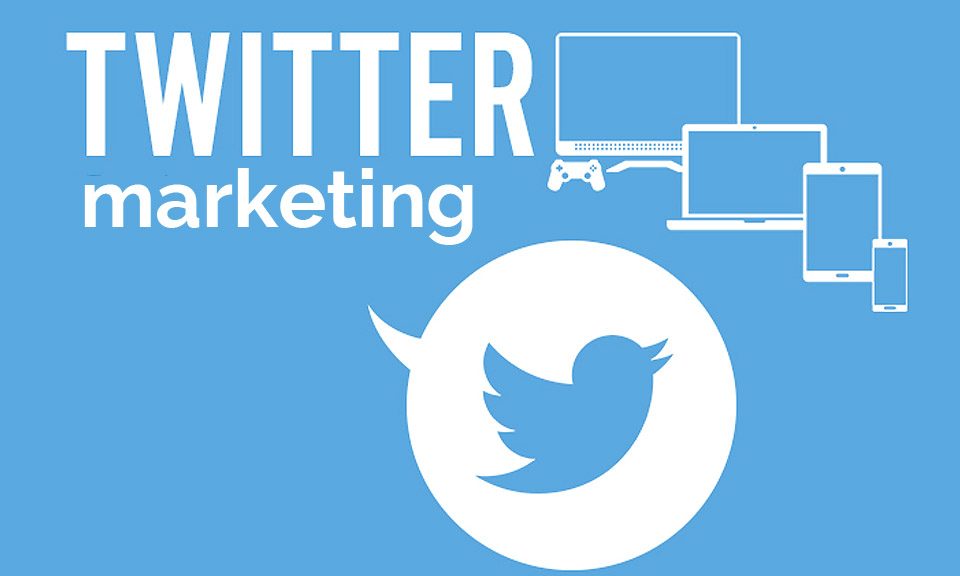Table of Contents
Introduction to Twitter Marketing
The 2024 Guide to Twitter Marketing – Twitter, also known as “X,” has evolved into a powerful platform for real-time engagement and marketing. With over 300 million active users, it offers businesses a unique opportunity to connect with a global audience, share updates instantly, and engage in meaningful conversations. This guide aims to equip you with the tips, examples, and tools needed to master Twitter marketing in 2024.
Why Twitter Matters for Marketers
- Broad Reach: Access to a diverse global audience.
- Real-Time Interaction: Engage with your audience instantly and participate in live conversations.
- Brand Awareness: Increase visibility through consistent and strategic posting.
- Customer Insights: Gain valuable feedback and monitor industry trends.
The Importance of Twitter in Modern Marketing
Key Benefits of Twitter Marketing
Twitter offers several benefits for modern marketers. It enhances engagement through interactive features like retweets, replies, and likes. The platform provides excellent networking opportunities, allowing businesses to connect with industry leaders, influencers, and potential partners. Additionally, Twitter Ads offer a cost-effective way to promote your brand and reach a targeted audience. Another significant advantage is using Twitter for customer support, providing real-time solutions to customer issues and building trust.
Examples of Effective Twitter Marketing
- Brand Awareness Campaigns: Launch campaigns to increase brand recognition and reach.
- Customer Engagement: Use humor and timely interactions to engage followers, as seen with brands like Wendy’s and Netflix.
- Promotions and Discounts: Announce sales and special offers to drive traffic and sales.
- Content Sharing: Share blog posts, videos, and other content to provide value and drive engagement.
Setting Up Your Twitter Business Profile
Creating a Professional Profile
A well-optimized Twitter profile is the foundation of your marketing efforts. Start by selecting a high-quality profile picture that represents your brand, such as a logo or professional headshot. Write a concise bio that clearly describes your business and includes relevant keywords. Choose a visually appealing cover photo that reflects your brand’s personality. Ensure your username is easy to remember and consistent with your other social media handles.
Optimizing Your Profile
- Pinned Tweet: Highlight key messages or promotions by pinning an important tweet at the top of your profile.
- Website Link: Add a link to your website or a specific landing page.
- Location: Include your business location to help local customers find you.
- Contact Information: Provide clear contact information to facilitate communication.
Understanding Twitter’s Algorithm
How Twitter’s Algorithm Works
Twitter’s algorithm prioritizes content based on user interactions and relevancy rather than chronological order. Key factors include engagement, recency, user interests, and media richness. Tweets with higher likes, retweets, and comments are more likely to be seen. Additionally, newer tweets and those that match user interests are given preference. Incorporating images, videos, or GIFs in tweets tends to result in better performance.
Tips for Working with the Algorithm
- Engage Early: Respond to comments and interact with followers quickly after posting.
- Use Rich Media: Incorporate images, videos, and GIFs to increase engagement.
- Stay Relevant: Participate in trending topics and use relevant hashtags.
- Post Consistently: Maintain a regular posting schedule to keep your audience engaged and maintain visibility.
Defining Your Twitter Marketing Strategy
Setting Clear Goals
To grow your Twitter followers effectively, you need a clear and actionable strategy. Start by setting specific goals such as increasing brand awareness, driving website traffic, or boosting sales. Each goal should be measurable, attainable, and time-bound. Your strategy should outline the types of content you will create, the frequency of your posts, and the engagement tactics you will use.
Creating a Content Plan
- Content Calendar: Plan and schedule your tweets to ensure consistency and timeliness.
- Content Types: Include a mix of promotional, educational, engagement, and curated content.
- Frequency: Maintain a regular posting schedule to keep your audience engaged and attract new followers.
Identifying Your Target Audience
Conducting Audience Research
Use Twitter Analytics to gather data on your current followers, including demographics, interests, and behaviors. This information will help you create detailed buyer personas that represent your ideal followers. Knowing who your audience is allows you to tailor your content and engagement strategies to meet their needs and preferences, ultimately attracting more followers who are genuinely interested in your brand.
Creating Buyer Personas
- Demographics: Age, gender, location.
- Interests: Hobbies, preferences, industry-related interests.
- Behavior: Online activity, preferred content types, engagement patterns.
Content Creation Best Practices
Crafting Engaging Tweets
Creating high-quality, engaging content is key to growing your Twitter followers. Focus on producing a variety of content types, including text tweets, images, videos, and polls. Each piece of content should provide value to your audience, whether it’s educational, entertaining, or inspirational. Consistency is also important; maintain a regular posting schedule to keep your audience engaged and attract new followers. Additionally, make sure your content aligns with your brand voice and messaging to maintain a cohesive presence on the platform.
Using Visual Content
- Images: Use high-resolution images relevant to your message.
- Videos: Create short, engaging videos that capture attention quickly.
- GIFs: Add humor and personality to your tweets with eye-catching GIFs.
Leveraging Hashtags Effectively
Importance of Hashtags
Hashtags are a powerful tool for increasing the visibility of your tweets. They categorize your content and make it discoverable to users interested in those topics. Research relevant and trending hashtags in your industry and incorporate them into your posts. However, avoid overloading your tweets with hashtags; 1-2 well-chosen hashtags per tweet are usually sufficient.
Creating Branded Hashtags
Develop unique hashtags for your brand or specific campaigns. Branded hashtags encourage user participation and make it easier to track engagement.
Participating in Twitter Trends
Staying Updated with Trends
Regularly check the “Trending” section on Twitter to stay updated with the latest trends. Participating in trending conversations can significantly boost your visibility.
Creating Trend-Based Content
- Relevance: Ensure your content is relevant and adds value to the conversation.
- Alignment: Make sure your participation in trends aligns with your brand values and messaging.
Engaging with Your Audience
Responding to Comments and Mentions
Engage with your followers by responding to comments, mentions, and direct messages promptly. This shows your audience that you value their interaction and fosters a sense of community.
Asking Questions and Running Polls
- Questions: Ask questions in your tweets to encourage interaction and gather insights.
- Polls: Use Twitter’s poll feature to engage your audience and collect feedback.
Building a Strong Community
Importance of Community Building
A strong community fosters loyalty and long-term engagement. Engage with your audience consistently to build trust and create a sense of belonging.
Creating a Community Strategy
- Regular Interactions: Interact with your followers through tweets, retweets, and likes.
- Twitter Chats: Host Twitter chats or Q&A sessions to engage directly with your community.
Utilizing Twitter Lists
What are Twitter Lists?
Twitter Lists are curated groups of Twitter accounts. They help you organize your feed and keep track of specific users or topics.
Creating and Managing Lists
Create lists for different purposes, such as industry experts, competitors, or customers. Regularly update and manage your lists to keep them relevant.
Benefits of Twitter Lists
- Organization: Stay organized and focused on relevant content.
- Engagement: Monitor conversations and participate in discussions important to your brand.
Running Twitter Ads
Types of Twitter Ads
Twitter Ads are an effective way to reach a larger audience and grow your followers. Promoted Tweets, Promoted Accounts, and Promoted Trends are some of the ad formats available.
Setting Up a Twitter Ad Campaign
- Ads Manager: Use Twitter’s Ads Manager to create and manage your ad campaigns.
- Target Audience: Define your target audience to ensure your ads reach the right people.
- Ad Formats: Choose the appropriate ad format based on your campaign goals.
Analyzing Twitter Analytics
Key Metrics to Track
- Follower Growth: Track the number of new followers over time.
- Engagement Rates: Measure likes, retweets, comments, and shares.
- Impressions: Monitor the number of times your tweets are seen.
- Link Clicks: Track clicks on links within your tweets.
Using Twitter Analytics
Regularly review Twitter Analytics to monitor your performance. Use the insights gained to refine your content strategy and improve engagement.
Custom Reports
Create custom reports to track specific metrics relevant to your goals. Custom reports provide a clear picture of your progress and help you make data-driven decisions.
Creating Viral Content
Characteristics of Viral Content
Viral content is often engaging, relatable, and shareable. It evokes emotions and prompts viewers to take action, such as liking, sharing, or commenting.
Tips for Creating Viral Content
- Tell a Story: Use storytelling to connect with your audience on an emotional level.
- Use Humor: Humor is a powerful tool for engagement. Make your audience laugh.
- Be Relatable: Create content that resonates with your audience’s experiences and interests.
Leveraging Influencer Partnerships
Finding the Right Influencers
Look for influencers who align with your brand values and have a large, engaged following. Tools like BuzzSumo and Followerwonk can help you find suitable influencers.
Collaborating with Influencers
Reach out to influencers with collaboration ideas, such as guest tweets, takeovers, or co-created content. Ensure the collaboration provides value for both parties and is mutually beneficial.
Measuring Influencer Campaigns
Track the performance of influencer campaigns using metrics like engagement rates, follower growth, and conversion rates. Assess the impact of the partnership on your brand’s visibility and engagement.
Hosting Twitter Chats and Spaces
Organizing Twitter Chats
Twitter chats are scheduled discussions around specific topics. They provide an opportunity to engage with your audience in real-time and establish your brand as a thought leader.
Promoting Your Twitter Chat
Promote your Twitter chat in advance to build anticipation and maximize participation. Use a specific hashtag to track the conversation.
Using Twitter Spaces
Twitter Spaces is a feature that allows you to host live audio conversations. Use Spaces to engage with your audience in real-time and discuss relevant topics.
Cross-Promoting on Other Platforms
Benefits of Cross-Promotion
Cross-promotion helps you reach a broader audience and drive traffic to your Twitter profile. It increases your overall social media presence and engagement.
Strategies for Cross-Promotion
- Social Media Channels: Share your Twitter content on platforms like Instagram, Facebook, LinkedIn, and TikTok.
- Engaging Captions: Use engaging captions and relevant hashtags to increase visibility and encourage interactions.
- Website Integration: Embed your Twitter feed on your website to showcase your tweets and drive traffic to your profile.
Using Twitter for Customer Service
Benefits of Twitter for Customer Service
Twitter allows you to provide real-time support and address customer inquiries quickly. It helps you build trust and improve customer satisfaction.
Best Practices for Customer Service
- Respond Promptly: Address customer inquiries and complaints as quickly as possible.
- Be Professional: Maintain a professional and courteous tone in your responses.
- Resolve Issues Publicly: Handle customer issues publicly to show transparency and build trust.
Using Direct Messages
For more complex issues, use direct messages to provide personalized support. Ensure your DMs are open so customers can reach out to you privately.
Optimizing Tweet Timing
Importance of Timing
Posting at the right times can significantly increase your tweet’s visibility and engagement. Identify when your audience is most active and schedule your tweets accordingly.
Best Times to Post
While optimal posting times can vary, general recommendations include mid-morning and early afternoon on weekdays, and early morning and late evening on weekends.
Using Analytics to Find Optimal Times
Use Twitter Analytics to identify when your tweets receive the most engagement. Adjust your posting schedule based on these insights.
Exploring Twitter Polls
Benefits of Twitter Polls
Twitter polls are a great way to engage your audience and collect feedback. They are interactive and can provide valuable insights into your followers’ preferences and opinions.
Creating Effective Polls
- Ask Relevant Questions: Ensure your questions are relevant to your audience and your brand.
- Keep It Simple: Use clear and concise language.
- Promote Engagement: Encourage your followers to participate and share the poll.
Analyzing Poll Results
Use the insights gained from your polls to inform your content strategy and better understand your audience’s needs and preferences.
Maximizing Visual Content
Importance of Visual Content
Tweets with images, videos, and GIFs receive higher engagement rates than text-only tweets. Visual content is more likely to be shared and can make your tweets stand out.
Creating Engaging Visuals
- High-Quality Images: Use high-resolution images that are relevant to your message.
- Short Videos: Create short, engaging videos that capture attention quickly.
- Eye-Catching GIFs: Use GIFs to add humor and personality to your tweets.
Using Twitter’s Media Studio
Twitter’s Media Studio allows you to upload, organize, and schedule your visual content. Use this tool to manage your media assets and enhance your visual strategy.
Exploring Advanced Features
Twitter Moments
Twitter Moments allow you to curate a collection of tweets around a specific topic. Use Moments to tell a story, highlight important updates, or showcase user-generated content.
Twitter Fleets
Twitter Fleets are disappearing tweets that allow you to share short-lived content. Use Fleets to share behind-the-scenes content, promotions, or time-sensitive updates.
Twitter Analytics
Twitter Analytics provides detailed insights into your account’s performance. Use this tool to track key metrics, analyze trends, and refine your strategy.
Future Trends in Twitter Marketing
Emerging Trends to Watch
Stay ahead of the curve by keeping an eye on emerging trends in Twitter marketing. These might include new content formats, innovative advertising strategies, or changes in user behavior.
Adapting to Platform Updates
Twitter frequently updates its features and algorithms. Being adaptable and quick to implement changes is crucial for maintaining your content’s visibility and effectiveness.
Leveraging New Features
Don’t be afraid to experiment with new features that Twitter introduces. Early adoption of new features can give you a competitive edge and help you stand out from the crowd.
Case Studies of Successful Campaigns
Analyzing Successful Campaigns
Study successful Twitter campaigns from other brands to understand what worked well and why. Look at their content strategy, engagement tactics, use of hashtags, and overall execution. Learning from successful campaigns can provide valuable insights and inspiration for your own efforts.
Key Takeaways
Identify key takeaways from these case studies that you can apply to your Twitter marketing strategy. Whether it’s a specific content format, engagement technique, or hashtag strategy, incorporating proven tactics can enhance your chances of success.
Measuring Twitter Marketing ROI
Defining Your Metrics
Determine the key metrics you will use to measure the success of your Twitter campaigns. These might include follower growth, engagement rates, video views, website traffic, and conversion rates. Clear metrics help you assess the effectiveness of your efforts and make data-driven decisions.
Analyzing Campaign Performance
Use Twitter Analytics and other tools to track your campaign performance against your defined metrics. Regularly review this data to identify trends, successes, and areas for improvement. Analyzing campaign performance helps you understand what’s working and where you can optimize your strategy.
Calculating ROI
Calculate the return on investment (ROI) of your Twitter campaigns by comparing the cost of your marketing efforts to the revenue generated. This helps you determine the profitability of your campaigns and make informed decisions about future investments.
Common Mistakes to Avoid
Overloading with Hashtags
Using too many hashtags can make your content look spammy and reduce engagement. Stick to 1-2 relevant hashtags per tweet to maximize effectiveness.
Ignoring Analytics
Failing to monitor and analyze your Twitter Analytics can prevent you from understanding what’s working and what’s not. Regularly review your analytics to make data-driven decisions and optimize your strategy.
Being Inconsistent
Inconsistent posting can lead to decreased engagement and follower loss. Develop a content calendar and stick to a regular posting schedule to maintain your audience’s interest.
Adapting to Algorithm Changes
Staying Informed
Twitter frequently updates its algorithm. Stay informed about these changes by regularly reviewing Twitter’s announcements and updates. Being adaptable and quick to implement changes is crucial for maintaining your content’s visibility and effectiveness.
Adjusting Your Strategy
When algorithm changes occur, adjust your content strategy accordingly. Experiment with different types of content, posting times, and engagement tactics to find what works best under the new algorithm.
Leveraging Algorithm Changes
Take advantage of algorithm changes by exploring new features and opportunities. Stay ahead of the competition by being proactive and innovative in your approach.
Using Third-Party Tools
Benefits of Third-Party Tools
Third-party tools can enhance your Twitter marketing efforts by providing additional features and capabilities. They help streamline your workflow, improve content quality, and provide deeper insights.
Popular Third-Party Tools
- Hootsuite: For social media management and scheduling.
- Buffer: For content scheduling and analytics.
- Sprout Social: For social media management, engagement, and analytics.
- Canva: For creating visually appealing graphics and images.
Integrating Tools into Your Strategy
Integrate third-party tools into your Twitter marketing strategy to enhance efficiency and effectiveness. Use these tools to streamline your workflow, improve content quality, and gain deeper insights into your performance.
Developing a Long-Term Strategy
Setting Long-Term Goals
Define long-term goals for your Twitter presence, such as reaching a specific follower count, increasing brand awareness, or driving sales. Break these goals down into smaller, actionable steps to make them more achievable.
Building a Sustainable Strategy
Focus on building a sustainable strategy that adapts to changes in the digital landscape. Continuously refine your approach based on data and insights. Stay committed to delivering high-quality content that provides value to your audience.
Adapting to Industry Changes
Stay informed about changes and trends in your industry. Adapt your Twitter strategy to reflect these changes and ensure your content remains relevant and engaging.
Conclusion: The Future of Twitter Marketing
Embracing Innovation
As Twitter continues to evolve, staying updated with the latest trends, features, and best practices is essential for success. Embrace innovation and be open to experimenting with new strategies and tools. The dynamic nature of Twitter offers endless opportunities for brands to connect with their audience in creative and impactful ways.
Final Thoughts
By understanding and leveraging Twitter’s unique capabilities, creating high-quality content, engaging with your audience, and staying adaptable to changes, businesses can effectively enhance their digital presence and drive significant growth. The future of Twitter marketing is bright, and with the right strategies, businesses of all sizes can achieve their marketing goals on this powerful platform.
This comprehensive guide provides an in-depth look at the essentials of Twitter marketing. By implementing these strategies, businesses can successfully navigate the platform and achieve their marketing goals.
Frequently Asked Questions
Social Blaze provides a comprehensive suite of features including social media scheduling, analytics, content libraries, team collaboration tools, RSS feed automation, and a browser extension to streamline your social media strategy.
Absolutely! Social Blaze is designed to cater to both small businesses and larger agencies, offering customizable solutions to fit various needs, whether you’re managing a single account or multiple clients.
Our AI assistant takes the hassle out of content creation by creating AI post content for you, think of it as your social media sidekick, saving you time while helping you level up your strategy with smart insights.
Yes! Social Blaze offers various integrations with popular platforms and tools, allowing you to streamline your workflow and enhance your social media management experience seamlessly.




